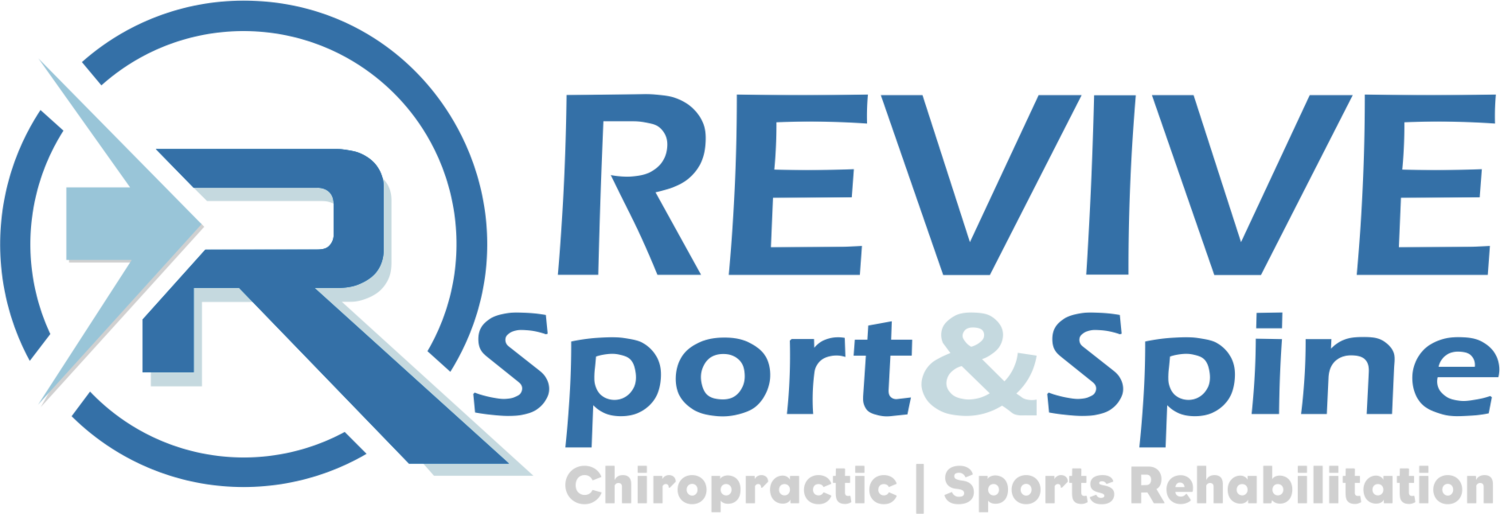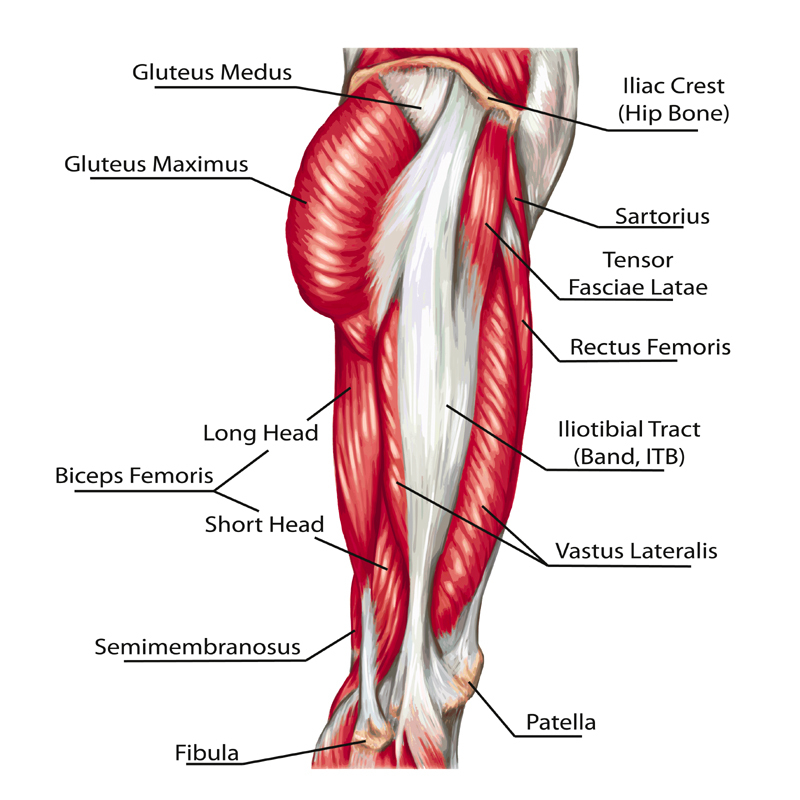What happens when stretching and strengthening are not enough to get you out of the Iliotibial Band Syndrome rut? What happens when you are like me, and you can’t get past that 5-mile threshold without the following days being painful to walk, much less get to run on back-to-back days? You seek care. You find a provider that understands running mechanics, realistic time frames and does everything possible to help you maintain some running while recovering from the injury.
Side note before we start, if you are picking up this series right now and have not read and worked through parts 1-3, do so now. The understanding you will gain will help this part be that much more helpful.
TIME FRAME TO RUNNING RECOVERY
Let's start by setting realistic goals. IT Band pain rarely, if ever, comes on overnight. It may seem like it was the ‘last run’ or the race that caused the pain, but if you reviewed the anatomy, mechanics, and nature of the injury, we know it was a long time coming. That alone, in addition to attempting to maintain some running through rehabilitation, means this will take longer than a couple of weeks.
Quick Lesson On Tissue Healing.
While bruising, swelling, and pain may subside, tissue damage can take weeks to months to fully remodel and heal to a fully functioning tissue that can handle the stress imposed by endurance training. The biggest mistake we see is when patients decide to quickly ramp up training and stop working as diligently on their rehab and mobility because they had a good run or two without pain. Don’t be fooled, routines matter and healing takes time.
We runners are just an impatient bunch.
With a realistic time frame in mind, care will typically range from 4-8 weeks. Holy cow you say? I think the same, but think about how long you tolerated the little ‘twinge’ at the side of your knee, how long your hip had to be tight and inefficient to cause that pain at the knee. Keep in mind, most doctors and therapists are going to try and keep you running and are talented in their craft, but just as a broken bone has to heal and remodel, so does our soft tissue; and it - just - takes - TIME.
WHAT DOES CARE LOOK LIKE?
Soft Tissue:
As Iliotibial Band Syndrome is an overuse injury affecting the soft tissues of the hip, lateral thigh, and lateral knee, addressing the involved muscles is priority number one! As in other conditions, utilizing treatment methods that have been proven to help relieve symptoms, improve mechanics, and help you return to running faster is our aim. Clinically, therapies such as dry needling, IASTM, cupping, and active & passive myofascial releases have shown to be useful in the treatment of IT Band Syndrome.
Joint Mobility
Manipulation is a great treatment option, especially when you look at the complexity of running mechanics. We have discussed in other conditions how one area of the body can affect another. When someone presents with IT Band Syndrome, we not only address the area of pain, the anatomy involved, but we also look at the whole chain. Assessing the movement of the foot, ankle, knee, hip, pelvis, and low back are all important in healing an Iliotibial Band issue. Restoring normal movement can be achived through manipulation of the joint. Determining which areas of the body that need this treatment comes from an exam focused on making you a better runner.
Rehabilitation & Home Care
EXERCISE REHABILITATION PROGRAM
Coming back as a better, stronger, bulletproof runner.
RETURN TO RUNNING
This is the most common question asked by runners once we finish discussing the problem and how we are going to address it. While most runners have a VERY hard time taking a step back, our goal is to maintain some form of running. Rehab requires a load, and as runners, running is our ‘load.’ Over time it is the capacity of this ‘load’ that has to expand. Too rapid an increase in volume or intensity, and we are back where we started. When it comes to a return to running program after an injury, just follow the fantastic advice of the Beastie Boys…slow and low, that is the tempo!
Assumptions:
While in an active treatment plan, cut the running volume 50% and take out the hard intensity work for the time being.
What other activities can you add in to maintain your cardiovascular effort while allowing your body to heal? Biking, swimming, aqua-jogging, weight training, etc.
WEEKS 1 & 2:
Run:
50% of the volume that preceded the IT Band pain.
Avoid down-hills & alter the terrain you run on (track, trail, road).
Take a break from any speed work/tempo/interval runs. Treat this time as base mileage. Our goal here is to maintain some load (running) while allowing the body to heal and adapt to care. Be Patient!
No back-to-back days or running. At this stage, rest time to recover between runs is the most essential part of your recovery time.
Rehab:
Start with our Best Running Warm-Up 1 before each of your runs these 2 weeks.
Foam Roll, Foam Roll, FOAM ROLL!
Work through the IT Band Phase 1 Rehab above. Perform these on non-running days. Slow & controlled movements are best.
Alternatives For Training:
Runners, it is okay to do something else every once in a while to replace and let your body rest from running. Bike, swim, zumba, pilates, yoga….
Take one ‘running’ day each week and get your cardio in some other way.
WEEKS 3 & 4:
Run:
Have you been able to get one pain-free run? If so, increase the volume of your long run by 10% over these next 2 weeks.
Introduce some basic ‘pick-ups’ in one of your runs. I suggest starting with 5-6, 30-second pickups over a 4-6 mile run. Easy, but it allows you to work on your turn-over, form, and increase your heart rate a little.
Rehab:
If you have yet to do so, start adding in bands to your warm up and to our IT Band Running Rehab Phase 1. Work on endurance with those exercises, beginning with 1x10, working up over the next 6 months to 2-3x15.
If you have been able to cruise through Phase 1 of your rehab exercises and have already introduced bands to each exercise, start working on Phase 2.
Alternative To Training:
Continue to do ‘something else’ for one of your running days. We are trying to change and reinforce good habits here for long-term injury-free running.
WEEK 5 & 6:
Run:
By now, we should be having a few runs each week that are pain-free with minimal soreness after. Time to progress!
The body responds to load, increasing the load is part of the progress. Start ramping up 10% in volume each week.
Ramping volume and intensity at the same time are often difficult, even for those who are not coming off an injury. Work on your volume before you drastically increase your intensity.
Bring hills, repeats, speed work, and tempo in gradually. See the point directly above this.
Lastly, time to start running back-to-back days. Let’s not get too excited here, keep it to one 2 day block each week.
Rehab:
If you haven’t started yet, it’s time to begin Phase 2 of our IT Band Syndrome Rehab Exercises. Same protocol as before. Perform these on non-running days.
Running warm-up. Work through parts 2 & 3 of our Best Running Warm-Up Series.
Alternative To Training:
Now that the habits are formed. Weight training, cross training for endurance, and other methods to improve your overall athleticism as a runner are vital to remaining injury-free. Keep it up!
Dr. Reheisse is a Board Certified Chiropractic Sports Physician practicing in the Greater Salt Lake City Area of Utah. Revive Sport & Spine provides evidence-supported chiropractic care and conservative sports injury management.



